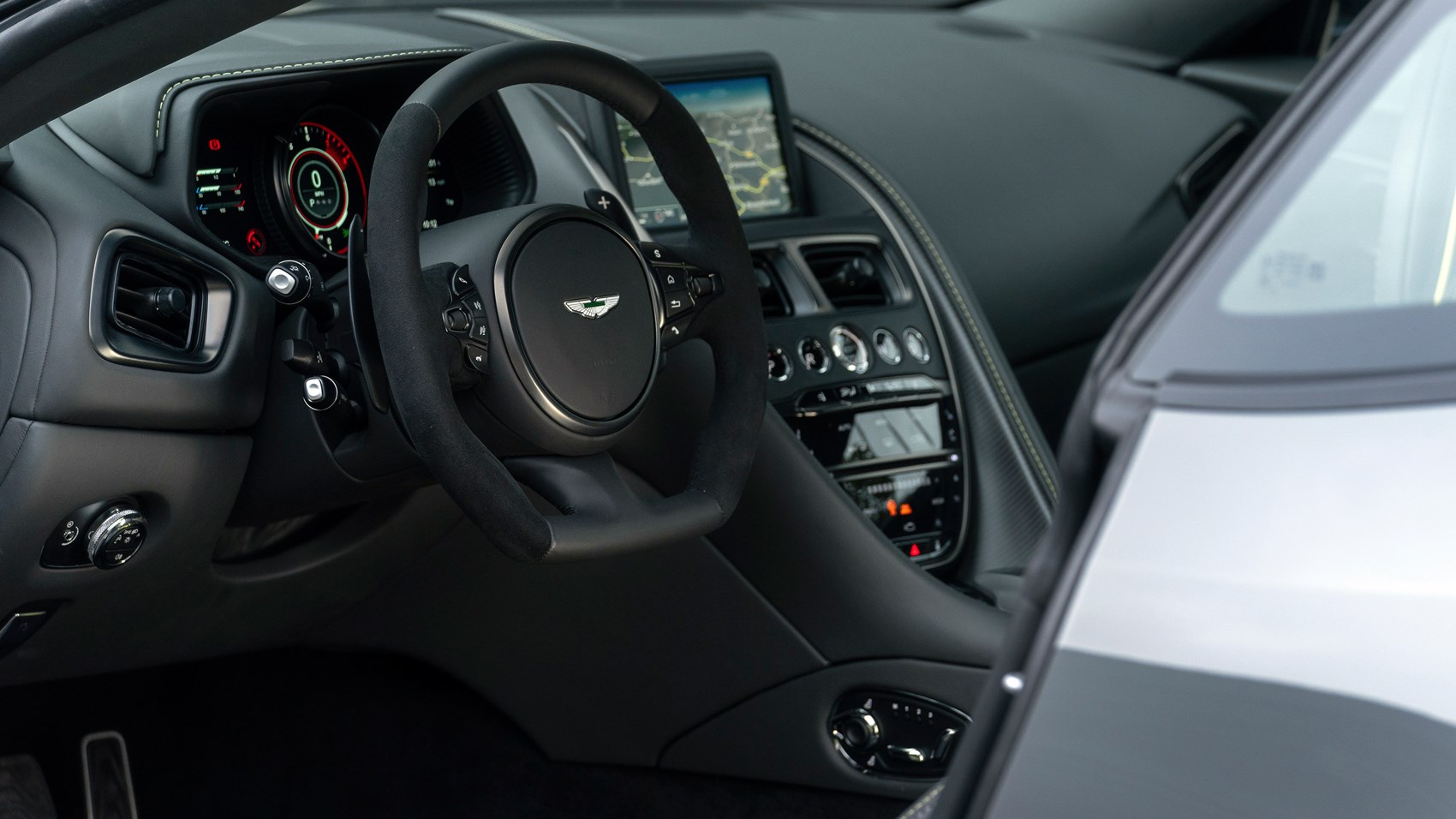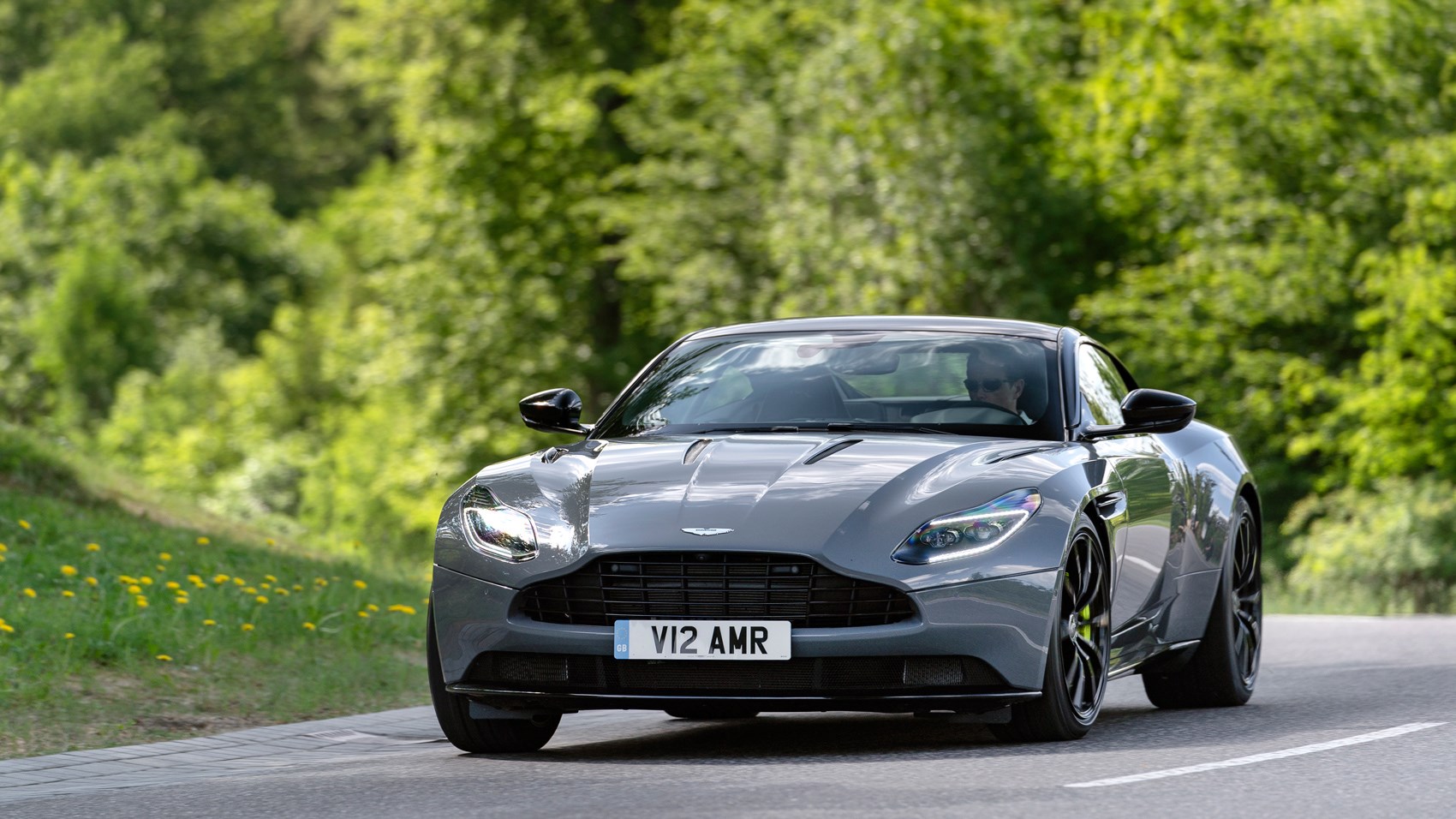► Ultimate DB11 driven
► New AMR brand grows
► Priced from £175k
Reviews of the entry-level DB11 V8 must’ve made for tough reading for its V12 big brother – not only was it cheaper and more economical, but it was plenty quick enough, sounded great and felt sharper too. We said it was the one you should buy. The DB11 AMR was not originally in the DB11 product plan, and it’s been in development only since September, but it aims to put the halo firmly back on the car with twelve cylinders, a car that – to give it its due – we always rated.
The AMR replaces the previous V12 rather than being positioned above it, costs £10k extra at £174,995, and is on sale now. Its launch coincides with the re-branding of Aston’s engineering centre at the Nürburgring, and – massive coincidence – the Bentley Continental GT.
What does AMR mean?
AMR stands for Aston Martin Racing, and it helps to connect the dots between Darren Turner and co lapping Aston GT racers at the weekend and Aston road cars. We’ve already seen those three letters applied to the Vulcan and previous Vantage, and you can expect to see them on the most sporting versions of every future Aston.
We live with an Aston Martin DB11 AMR: our full long-term test review
So what does AMR mean for the DB11?
The base V12 – with 5204cc boosted by twin turbochargers – remains basically the same, but power increases by 30bhp to 630bhp thanks to calibration changes and the top speed increases from 200mph to 208mph, figures that both edge slightly ahead of that new Bentley. Meanwhile, the 0-62mph dash improves by a quite marked 0.2sec to 3.7 seconds to match the car from Crewe. Torque remains unaltered, at 516lb ft (Conti: 664lb ft). Tweaks to the previously fuzzy gear shift and more a few more dBs for the big DB are said to make it express ‘its character more explicitly’, albeit with the aim of retaining the DB11’s GT refinement.

The chassis, similarly, has been sharpened, but with one eye on keeping the suppleness that impressed us on the V12’s debut – the spring rates are unchanged, but the dampers uprated by 10 per cent front and rear. The rear subframe is now stiffer (thanks to lessons learnt on the V8 DB11s), and the engine mounts are also uprated, with the aim of making the front feel as sharp as the now sharper rear end. New forged alloy wheels shed 3.5kg per corner (and look nice too).
How do people tell I’ve got an AMR?
There are carbonfibre bonnet ‘blades’ and side strakes, plus there’s a gloss-black roof, darker grille, side skirts and splitter, plus dark headlight surrounds and smoked tail lamps. The effect is quite striking, and for the right reasons too.

Inside, you also get a mix of leather and Alcantara – the latter is applied to the bolsters, and helps grip you in seats that could still be improved (the firm head rests and lack of under-thigh support especially). Aston is also introducing 100 units of three ‘Designer Specification’ models, yours for £201,995.
What’s the DB11 AMR like to drive?
Very good. It’s 18 months since I drove the regular V12, and sometimes relatively small enhancements like this can be hard to detect without the benefit of a back-to-back drive. But the DB11 AMR feels markedly different. You notice the steering first, which feels weightier as you wind on lock. It’s not stodgy or macho in its additional weight, because it’s still easy-going enough to make the DB11 shrug off its not inconsiderable 1870kg and feel eager to dance left and right. Rather, the extra weight adds extra definition and a more precise, keyed in feel. The tactile part-Alcantara wheel helps here too. So it might be surprising to learn that the steering calibration is identical – it’s the uprated chassis that makes it feel different.

And you notice the chassis tweaks too. I always liked the original V12, but there was clearly room to make it sharper – the rear end would lean and feel quite loose in harder driving, especially in the soft GT mode. The AMR feels significantly more composed and precise as it leans into a bend – you make your steering input, it settles calmly, and you power out. Naturally, Sport ramps this all up a notch for even flatter cornering, but impressively there’s still the suppleness to work not only with the ebb and flow of a challenging road, but to soak up some extremely fractured sections of Tarmac too.
Sport Plus? That’s firmer still and we’d leave it for the circuit. Despite this, there’s still obvious room to make the DB11 sharper, but as a sporting GT – a car that needs to cosset as much as it does entertain –I’d say the ride/handling balance is sweetly struck. And, remember, the DBS Superleggera will be a sharper steer still, with Aston targeting the middle-ground between DB11 AMR and the more aggressive Vantage.
How about the extra power?
So long after my last V12 drive, that small difference is hard to detect, but this remains a great engine – one that retains much of the character of Aston V12s, but with a hugely eager mid-range, great response and a huge turn of speed. Wind it all up into Sport Plus and, at times, the responsiveness can be a bit giddy, but you can always knock it back a tad. Sport is probably the best compromise, and you still get some suitably evocative pops and crackles.

The improved gear shift calibration for the eight-speed auto is more noticeable than the power increase. The previously fuzzy shift is replaced by a cleaner, sharper transition between ratios, one that never feels intrusive when you’re taking it easy.
Verdict
The DB11 AMR marks a significant improvement over the original V12 model, particularly in terms of driver appeal. The V12’s marginal extra power isn’t particularly transformative, but the small tweaks to the chassis are easily detected, as is the punchy new gear shift calibration – the result is more immediacy and precision to the way this car tackles a great road. Best of all, the sharper focus comes at no expense to the Aston’s supple ride comfort. And all in the nick of time for those Bentley Continental GT twin tests too. Fancy that.
Check out our Aston Martin reviews